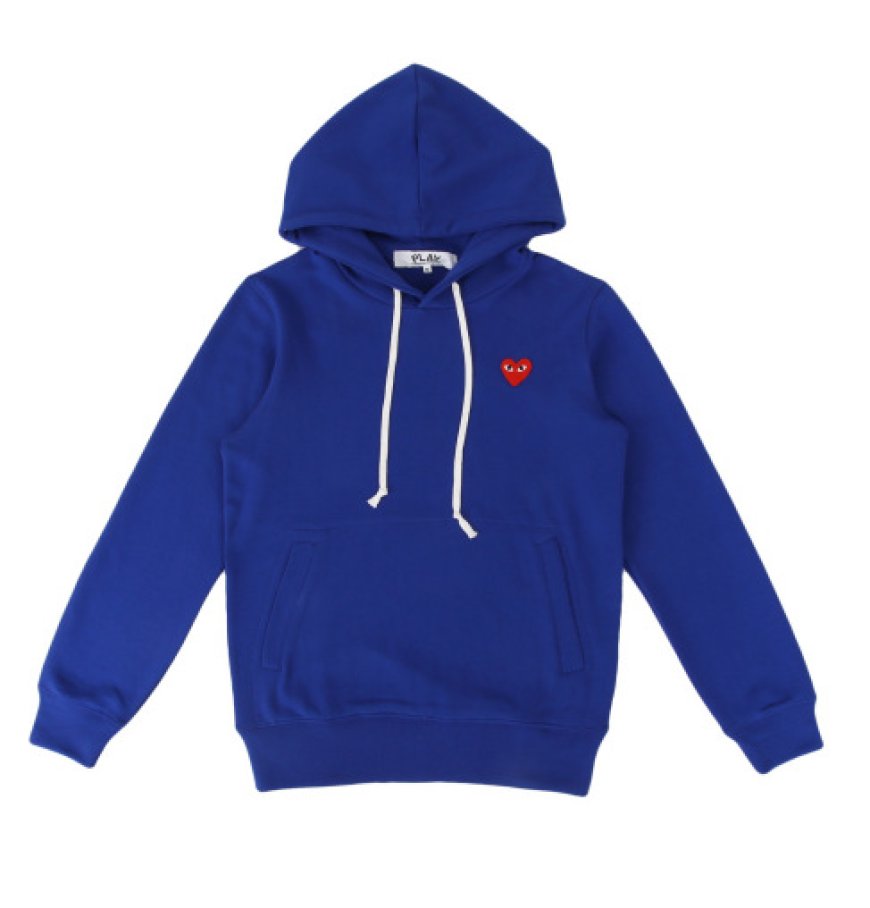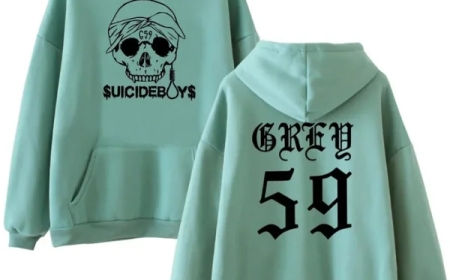The Visionary World of Comme des Garçons in Fashion Design
Comme Des Garcons Play Official Store is the best choice for your wardrobe, Get Amazing CDG Hoodie, Shirts, Jackets, at 45% Off, Fast Shipping Worldwide.

Comme des Garons, the Japanese fashion brand founded by Rei Kawakubo in 1969, stands as one of the most transformative forces in modern fashion. Known for its avant-garde approach, the brand has redefined the boundaries of creativity, blurring the lines between art and fashion. Comme Des Garcons Through a series of bold collections and revolutionary design philosophies, Comme des Garons has not only altered the way we perceive clothing but has also influenced generations of designers and fashion lovers around the world.
A Visionary Beginnings
Rei Kawakubos journey into fashion was anything but traditional. Starting with an education in fine arts, Kawakubo initially ventured into the world of design by working as a stylist and later as a fashion director. It was in 1969 when she opened her first Comme des Garons store in Tokyo, and her vision for the brand quickly began to emerge. From the very beginning, Kawakubo rejected conventional ideas of beauty, focusing on creating garments that were sculptural, thought-provoking, and conceptually complex. She didnt design with the idea of fitting into trends or following the traditional fashion calendar, but instead, she created pieces that were deeply personal, inspired by her own artistic explorations.
Unlike the mainstream fashion world that was focused on glamour and commercial success, Kawakubos vision for Comme des Garons was to create a platform for radical, thought-provoking designs that questioned the status quo. This was a brand that wasnt afraid to challenge ideas about form, function, and beauty, and its designs often blurred the lines between wearable fashion and conceptual art.
Challenging Fashion Norms
Kawakubos approach to fashion design can best be described as radical. In the early 1980s, Comme des Garons shocked the fashion world with a collection that featured models dressed in oversized, deconstructed garments. These were not the glamorous, fitted dresses seen on runways in Paris or Milan, but instead, garments that looked rough, unfinished, and deliberately out of proportion. The collection was met with mixed reviews, with some critics praising its originality and others dismissing it as unwearable. However, what was clear was that Comme des Garons was not aiming to please the massesit was creating a new language for fashion that sought to question existing norms.
Over the years, Comme des Garons continued to subvert expectations with its designs. Kawakubo often used unconventional materials such as plastic, paper, and metal, while incorporating elements of punk, deconstructionism, and even avant-garde theatre into her collections. She didnt just design clothing; she created wearable art that was deeply personal, political, and often confrontational.
The Aesthetic of Anti-Beauty
One of the defining features of Comme des Garons is its rejection of traditional standards of beauty. Kawakubo's designs often feature asymmetry, unfinished seams, and unconventional silhouettes, all of which challenge the norms of femininity and masculinity in fashion. The concept of "anti-beauty" is central to the brand, and it has been embraced by those who see fashion as a medium for self-expression rather than a means of adhering to societal standards of attractiveness.
This rejection of beauty as a commercial product allowed Kawakubo to explore deeper themes through her collections. For example, in her 1997 collection, "Body Meets Dress, Dress Meets Body," she used padding and shapes to distort the human form, questioning conventional ideas of the body and identity. The result was a collection that was simultaneously disturbing and fascinating, forcing viewers to reconsider their perceptions of the human body and its relationship to clothing.
The Intersection of Art and Fashion
One of the most significant contributions of Comme des Garons is its ability to bridge the gap between fashion and art. Kawakubos designs are often described as conceptual pieces that belong in a gallery as much as on the runway. The brands collections frequently explore themes of abstraction, minimalism, and surrealism, and many of its garments resemble sculptural pieces rather than traditional clothing.
In fact, Comme des Garons has collaborated with numerous artists and architects over the years, further cementing its place at the intersection of art and fashion. These collaborations, which have included working with the likes of visual artists such as David Lynch and photographer Nick Knight, have allowed Comme des Garons to push the boundaries of both fields. The brands runway shows have often been described as performances, where the models arent just showcasing clothesthey are embodying a concept or an idea.
This merging of fashion and art has elevated Comme des Garons to a level where it is not just viewed as a clothing brand but as a cultural institution. Its influence extends beyond the fashion world, with its impact felt in fields as diverse as architecture, film, and visual art.
Subverting Gender and Identity
Another revolutionary aspect of Comme des Garons work is its approach to gender and identity. The brand has long been known for blurring the lines between masculine and feminine, with designs that are not limited by traditional gender norms. In fact, Kawakubo has often stated that her clothing is designed to be gender-neutral, and her collections frequently feature both male and female models wearing similar or identical garments.
This subversion of gender norms has been a powerful statement in a fashion world that has historically been dominated by rigid definitions of masculinity and femininity. Comme des Garons' approach to gender fluidity has inspired many other designers, with its collections serving as a blueprint for how fashion can challenge, rather than reinforce, traditional ideas of gender.
The Cult Following
Over the years, Comme des Garons has amassed a dedicated and loyal following. The brands commitment to individuality, creativity, and boundary-pushing design has resonated with fashion insiders, artists, and intellectuals alike. The brands fans often see it as more than just a labelits a symbol of resistance against the mainstream, a statement of artistic integrity, and an expression of personal identity.
The brands collaborations with other high-end Comme Des Garcons Converse labels and its collaborations with streetwear brands like Supreme have only served to increase its cultural cachet. Comme des Garons is now a staple not only in high fashion but also in the streetwear scene, where its bold designs have become a symbol of status and cool.
Conclusion: A Legacy of Innovation
Comme des Garons, under the visionary guidance of Rei Kawakubo, has left an indelible mark on the fashion world. Its radical approach to design, its rejection of conventional beauty, and its ability to blend fashion with art have all contributed to its status as one of the most innovative and influential brands in fashion history. In a world where trends come and go, Comme des Garons remains a beacon of creativity and originality, inspiring future generations of designers and artists to think outside the box and embrace the avant-garde.





































